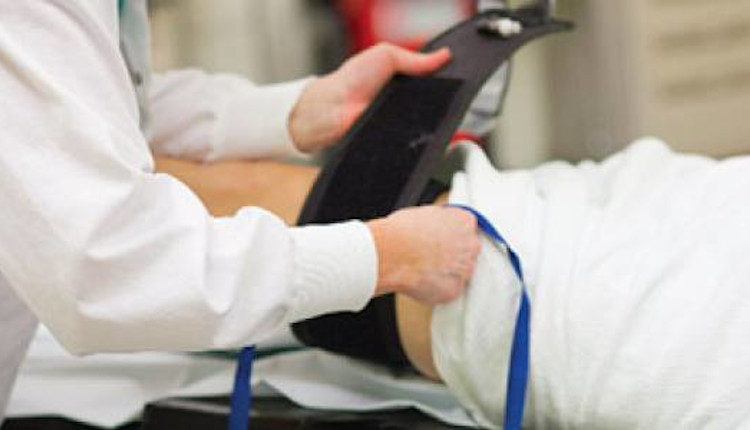
Tourniquet or no tourniquet? Two expert orthopaedics speak on the total knee replacement
What about the use of a tourniquet in the clinical field to provide a total knee replacement? Could it turn out to be dangerous or may it solve complications?
The tourniquet is widely used especially in both clinical operations and prehospital emergency medicine worldwide. Thanks to its immediate possibility of application, it can save many lives and help surgeons to carry their job out in the best way. But is it always this way? Two famous and expert surgeons, Viktor Krebs and Amar Ranawat discuss its function. In this article, we reported their thesis.
Tourniquet: yes or no? Yes, a better view of the entire joint and more safety for the medical staff
Let us start with the literature. It is not recommended to let the patient bleed without control. According to Dr Krebs, a tourniquet is required in a total knee replacement because it allows seeing perfectly the anatomy of the joint. In addition, it permits to minimize intra-operative bleeding. This helps cement grip on the bone surface, while it is well dried and clean.
Without the tourniquet, the patient would bleed abundantly and this would not only mean a concrete danger, but also a not perfect outcome of the operation. thanks to the tourniquet, indeed, surgeons and medical staff can see clearly the back of the knee, improving the clinical outcome.
Viktor Krebs continues sustaining that a tourniquet also avoids dangers and complications for the medical staff in case a patient is infected. If a patient with HIV, for example, without a tourniquet on during such an operation, could disperse his/her blood all over the room and allegedly infect the staff.
Conclusions of Dr Krebs
About the 90% of surgeons use tourniquets in total knee replacement and it’s been a clinical standard for generations. According to Dr Krebs and to literature, the use of the tourniquets is safe and effective with no controversies. The very important part to consider is, instead, the duration of the tourniquet use and the cuffed pressure. Reports say that the longer the tourniquet use, the larger the chance of complications.
Dr Krebs affirmed to have conducted research from 2010 forward concluding that the tourniquet significantly decreased blood loss and did not adversely affect postoperative functional outcomes. The randomized double-blind study of 200 patients from Rothman Orthopaedic Institute—100/100 randomized—found that tourniquet use.
Literature shows mixed results for actual intra-operative blood loss, the incidence of DVT [deep vein thrombosis], surgical site infection, and pain related to tourniquet use. But the use of tourniquets isn’t very controversial.
Data support both use and non-use of the tourniquet, but Dr Krebs affirms he does use it because it works if used in a safe way.
Tourniquet: yes or no? No, too dangerous for patients
On the other hand, Professor Amar S. Ranawat, sustained “tourniquets are dangerous.” Prof. Ranawat began immediately saying that tourniquets are sometimes dangerous. Ideally, surgeons would know how to perform surgery without them. He agrees with the fact that tourniquets ‘minimize blood loss, you can see the joint better, improves cementing technique, etc.’.
However, Prof Ranawat sustains that using too long a tourniquet, for example, can cause problems such as thigh pain, paralysis, complications, ischemia and soft tissue damage.
The real importance is the meticulousness of surgery and that the data speak clearly in his favour. He started by talking about a case with spinal anaesthesia. He uses an iPack block in the knee along with intravenous antibiotics or tranexamic acid (TXA).
“When you initially place the tourniquet, make sure you don’t create the ‘venous tourniquet ‘ effect because it would slow things down. I draw the incision in extension and make the incision in flexion. That’s the key: you need to learn how to do it in flexion. The whole procedure must be done this way!
Professor Ranawat continues, “I expose in flexion, then I remove the lateral meniscus and I cauterize the lateral inferior geniculaten. Always in flexion, as said”. Then I make cuts. If the anesthesiologist is pumping blood pressure up to 200, you have to raise the tourniquet. If the medical staff cooperates well, you can keep it down the whole time.”
At the end of these passages, you can choose to cement or not, doing the type of fixation you retain the best. But if you give a periarticular injection with epinephrine and use topical TXA, then drainage is unnecessary. You can make a plastic closure. You can have a field where you seem to want it, as opposed to the bloodbath situation described earlier by my colleague.”
Conclusions of Prof Ranawat
It is recommended to wash the bone, in order to proceed without the cement. But here’s the point: doing it without tourniquet is a possible technique, but doing it right is the matter. You need to be skilled and have done it many times. That acquisition skill doesn’t happen overnight.
The closure is important as well. Professor Ranawat recommends that you have to close it tightly, clean it and dry it. You can choose Dermabond or another type of cement. These are the steps illustrated by Professor Ranawat.
The complications of using tourniquet are well known. Time is one of them. You cannot provide a two-hour operation with a tourniquet on. It is essential, though, avoiding the use of a tourniquet and use antibiotics and TXA to enter intravenously and that remain in the body for a longer period of time.
READ ALSO
Tourniquet: Stop bleeding after a gunshot wound
Do tourniquets save lives? Maybe
Tactical medical evacuation, training and mass bleeding control
Stop bleeding techniques thought to the public to increase emergency care awareness
The Original Israeli Emergency Bandage
SOURCES
TOTAL KNEE REPLACEMENT: TO TOURNIQUET OR NOT TO TOURNIQUET? Orthopaedics this week
Orthosummit
REFERENCE
https://orthosummit.com/author/1669/
https://my.clevelandclinic.org/
https://www.hss.edu/physicians_ranawat-amar.asp


